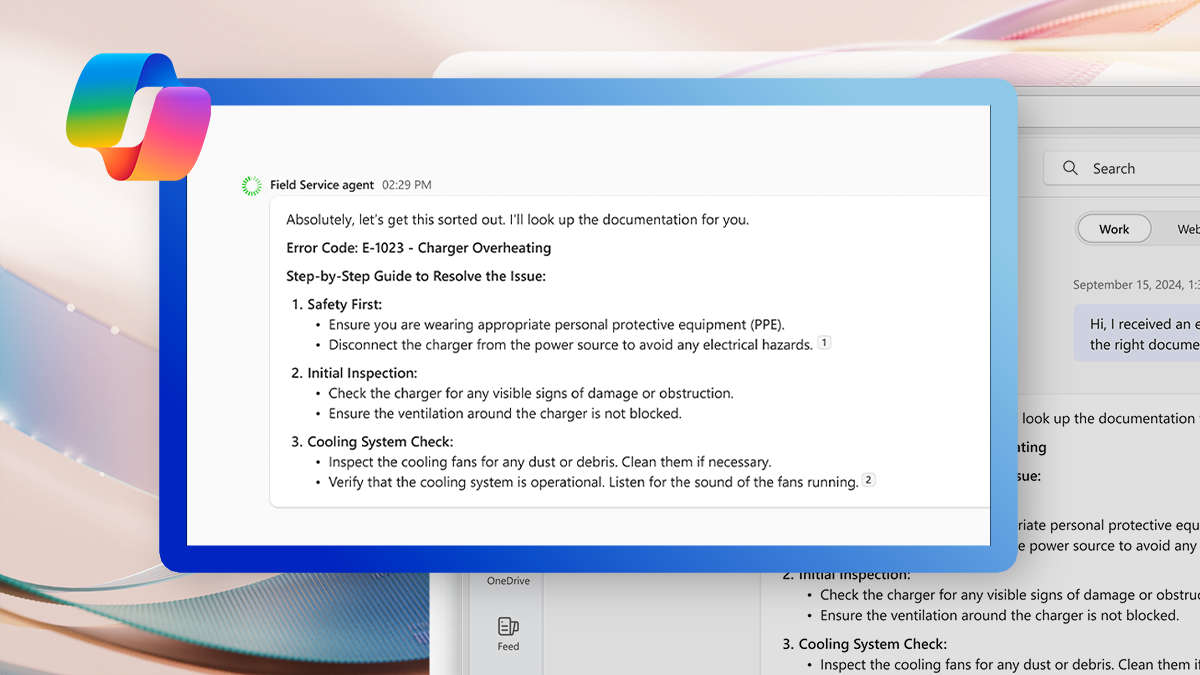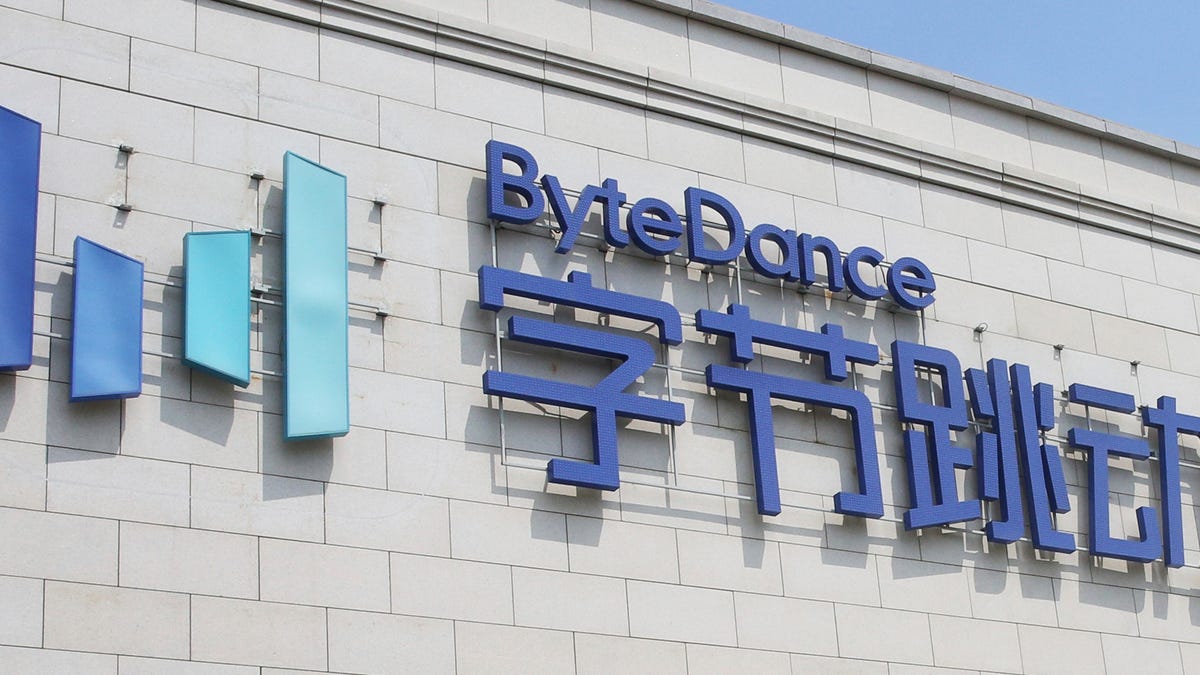- AI Bytes Newsletter
- Posts
- AI Bytes Newsletter Issue #37
AI Bytes Newsletter Issue #37
Ethical Dilemmas of AI and the Legacy of James Earl Jones, Microsoft Copilot Studio, Andrew Ng on an AI first Mindset, Tool of the Week: Runway Gen 3 Video-to-Video, Google's $120M AI Education Fund: Genuine Good or Strategic Move?, NVIDIA AI Aerial's Impact on Wireless Networks, HuggingFace AI community

Welcome to AI Bytes Newsletter Issue #37! In this edition, we explore how Microsoft's Copilot Studio is reshaping business workflows with customizable AI agents. We'll also dive into the ethical dilemmas of AI recreating iconic voices, like James Earl Jones' Darth Vader. Plus, don’t miss our featured tool of the week, Runway Gen 3, and a look at Google’s $120M AI education fund.
The Latest in AI
A Look into the Heart of AI
Featured Innovation
Unlocking the Future: Microsoft Copilot Studio and the Rise of AI Agents
This week, we're highlighting Microsoft's latest leap in AI with Copilot agents, developed through Microsoft Copilot Studio. These agents are designed to transform how businesses use AI in their daily operations, offering more control, customization, and scalability than ever before.
Copilot Studio empowers users of all skill levels, from IT pros to beginners, to create AI agents tailored to specific business needs. These agents automate tasks, summarize information, and even perform autonomous actions like sending emails or updating records. Whether it’s improving customer service, optimizing sales, or streamlining internal processes, Copilot agents are built to make every aspect of a business more efficient.
Two recent upgrades make Copilot Studio especially exciting:
1. Agents can now be directly integrated into Microsoft 365, allowing users to access and interact with them seamlessly within their workflow.
2. A new, user-friendly experience enables anyone to build agents using natural language in platforms like SharePoint, no coding required.
With over 50,000 organizations already using Copilot Studio, Microsoft’s vision is clear: these agents are set to become as common as documents or spreadsheets, embedded into the daily flow of work. They connect to vital data sources like SharePoint and Microsoft Dynamics 365, making them smarter and more capable of real-world actions, from automating reports to managing support tickets.
Copilot Studio’s updated tools will continue rolling out through October, allowing more businesses to build agents that fit their unique needs, with security and compliance at the forefront.
The rise of AI tools like Copilot agents is more than just an emerging trend, it is actively reshaping how companies operate, placing powerful technology into the hands of everyone. By lowering the technical barriers, Microsoft is enabling organizations to use AI not only for increased efficiency but as a key part of their innovation strategy.
Microsoft Copilot Studio offers the chance to turn routine processes into intelligent, automated workflows, letting teams focus on what really matters. It’s not just about working faster, but working smarter, which we believe is what people are looking for.
Ethical Considerations & Real-World Impact
The Immortal Voice: Ethical Dilemmas of AI and the Legacy of James Earl Jones
This week's journey into an ethical considering in recent AI news takes us down a path that forces us to ask: Just because we can, should we? With the recent passing of James Earl Jones, a cinematic icon best known for voicing Darth Vader, we're reminded of the incredible impact his performances had on audiences across generations. While his voice will live on through AI, thanks to an agreement he made with Lucasfilm and Respeecher, this move opens a much larger discussion.
Jones had the foresight to sign off on the use of his voice for future performances through AI, giving his blessing to continue the legacy of Darth Vader. But this decision also raises ethical questions about how much control actors have over their likeness, especially after they’re no longer here to give consent in real-time.
The article points out that while Jones' situation seems positive — with him being kept informed and even providing input on how his voice is used — the larger implications for the acting community are concerning. With AI stepping in to replicate voices, the potential for this technology to replace actors or limit job opportunities is significant. Some actors, like Zeke Alton, argue that not everyone will get the same respect or compensation Jones received. This imbalance, highlighted by recent strikes against AI’s role in entertainment, underscores the danger of technology replacing creativity, without fair compensation or acknowledgment of the artist behind the work.
Another layer to this ethical puzzle is legal. The controversy surrounding Peter Cushing’s AI-recreated appearance in Rogue One shows how thorny this issue can get when the deceased have not clearly outlined permissions. A lawsuit brought forward by Cushing’s friend, alleging improper use of his likeness, indicates we’re not close to settling this debate, and that it should not be rushed to too early a conclusion.
Actors worry that even though this technology could open creative doors, it may also close off opportunities for future generations to create their own legends. The tech could, in some ways, lock in the legacies of the past, keeping today's performers in the shadows of digital immortals like Darth Vader. Although I am no fan of Hollywood and could truly care less about the celebrity lifestyle, I do have to remain neutral when considering the totality of impact that AI may have on different industries going forward.
We can be certain that AI will continue to evolve, thus, we must balance respect for the art and its creators with the advancements that allow characters to live beyond the actors. I also believe that we should respect the memory of those that have gone before us, especially in cases that are not so clear cut or decided upon ahead of the actor or artists passing. Should we be comfortable with an industry where our heroes are resurrected indefinitely, while new voices struggle to be heard? Should we encourage certain personalities and characters to live on forever? For now, the answers to these questions remains unclear, but the questions certainly aren't going away.
AI Tool of the Week - Runway Gen 3 Video-to-Video
The Toolbox for using AI effectively
This week’s tool of the week is (again) RunwayML, this week, we’re specifically focusing on the newer video-to-video feature of Runway Gen-3 alpha.
This groundbreaking feature allows users to transform existing videos using artificial intelligence, opening up new possibilities for creative expression and video editing. The tool enables creators to upload a real-world video and modify it using text prompts or preset styles, altering elements such as setting, performers, or overall aesthetics while maintaining the original motion and intent.
The video-to-video capability represents a significant advancement in AI-powered video creation, offering users unprecedented control over movement, expressiveness, and intent within generated content. This new feature complements Runway’s existing text-to-video and image-to-video functionalities, providing a comprehensive suite of tools for AI-driven video production. Users can now start with a real video to define motion and then use AI to adjust design and aesthetics, effectively creating a new video that appears to be from an entirely different universe.
Runway’s latest innovation has garnered attention from both individual creators and major studios. In a landmark deal, Runway has partnered with Lionsgate, a major film studio, to develop a custom AI video production and editing model using Lionsgate’s vast library of content. This collaboration marks the first time a major film studio has directly engaged with an AI video model provider, potentially revolutionizing the filmmaking process. The partnership aims to initially focus on storyboarding, background creation, and special effects, particularly for action-heavy productions.
If you want to get started with Runway’s video-to-video, we’ve linked a tutorial video below:
Rico's Roundup
Critical Insights and Curated Content from Rico
Skeptics Corner
Google’s $120M AI Education Fund: Genuine Good or Strategic Play?
Now, I have bagged on Google before many times, however, this education fund announcement gives me a bit of hope, but I am not convinced at this point. When a tech giant like Google commits $120 million to global AI education, it’s easy to applaud the initiative as a step in the right direction. After all, artificial intelligence is shaping every aspect of our lives, from healthcare to climate science, and ensuring that everyone has access to AI knowledge could break down socioeconomic barriers. But, in typical Skeptic’s Corner fashion, it’s worth asking: Is this purely philanthropy, or is there a bigger game at play?
The Fund: What’s on the Table
During the UN Summit of the Future, Google CEO Sundar Pichai announced a $120 million Global AI Opportunity Fund. The fund is set to partner with local nonprofits and NGOs worldwide, aiming to provide AI education and training in various communities. From what was shared, the focus spans language access, climate disaster alerts, and economic progress. At face value, this seems like a sincere effort to bridge the “AI divide” and ensure that people everywhere have a shot at participating in the future of AI. But when do we ever encourage anyone to take anything at face value? Especially when it comes to the promises of big tech. As promising as this all sounds, we have to ask: Will this education be free from corporate influence?
The Problem with "Strings Attached" Philanthropy
There’s no denying that Google has played an enormous role in developing AI. Yet, it’s critical to scrutinize who controls access to the tools and training provided by this fund. Will local educators and NGOs have the autonomy to teach AI in a way that’s unbiased and focused on empowering communities? Or, will Google’s platform subtly push their technologies and services, steering the narrative of how AI is understood and implemented?
It wouldn’t be the first time a large corporation provided “help” that ultimately benefited its own interests. Look at the history of educational partnerships in other sectors, where branded software and services slipped into curriculums, pharmaceutical companies directing health professionals education and protocols in order to push and sell their products. What we don’t want is a situation where Google’s assistance becomes a soft form of market capture, ensuring their tools become the default option for generations of new AI users and developers. The fund should empower communities with knowledge, not limit them to proprietary solutions.
The Potential for Real Change
Let’s not forget: the upside here is huge, if the program and funding are executed and disseminated properly. AI education could fundamentally change the trajectory of underrepresented communities. Imagine young students in rural areas using AI to solve local problems—from environmental challenges to improving access to healthcare. Imagine them building solutions based on their unique experiences and needs, rather than just adapting to the worldviews of Silicon Valley.
The key here is local control. By putting power into the hands of local educators, nonprofits, and technologists, this initiative could potentially foster a generation of innovators who aren’t just users of AI but leaders in its development. If done correctly, it would be more than just about teaching AI, but teaching communities to harness it to solve their own issues in ways we may not even foresee yet.
AI has the potential to level playing fields globally, giving small businesses, farmers, healthcare workers, and educators new tools to thrive. Google’s fund could be the spark that ignites a truly global AI movement—if it empowers local leaders rather than centralizing influence.
Regulation and Ethical Concerns
Interestingly, Pichai also called for “smart product regulation that mitigates harms.” Here’s the rub: what does “smart regulation” look like from Google’s perspective? There’s a concern that tech giants like Google may want regulation that benefits their market position, stifling competition from smaller AI startups. After all, many regulations can serve as barriers to entry for emerging players, giving big tech more control.
Even with the best intentions, Google’s role in AI governance could influence policy in ways that expand its reach rather than limiting the ethical dilemmas associated with AI. Deep fakes, biased algorithms, and economic disruptions are just some of the issues regulators must handle carefully, and it’s unclear where Google’s interests truly lie in ensuring a fair, open AI ecosystem.
The Future: What Role Do We Play?
Philanthropy like this offers a rare chance to involve future generations in the most transformative technology of our time. What’s critical is that students, particularly those in marginalized and underfunded communities, have the freedom to explore and shape AI without being tied to a corporate agenda. They should be given the tools to think critically about the ethical implications of AI, from privacy concerns to automation’s impact on jobs.
It’s inspiring to think about a future where AI isn’t dominated by a handful of tech companies but instead thrives with diverse creators and thinkers from around the world. But for that future to become reality, initiatives like Google’s need to be transparent, inclusive, and truly focused on education without pushing commercial interests.
In an ideal scenario, the next generation won’t just learn to use AI—they’ll learn to shape and challenge it, driving innovations that reflect the needs of their communities rather than the bottom lines of tech corporations. If we can ensure that Google’s education fund has no hidden strings, we might just be witnessing the birth of a new, globally-driven AI era.
Let’s hope Google takes the long view on this. The potential is there, but real change will only happen if the education stays as open as the opportunities AI promises.
What do you think? Is Google’s initiative an honest push for global good, or is there more beneath the surface? Join the conversation on our LinkedIn and share your thoughts! Mike and I would love to hear from you!
Must-Read Articles
Mike's Musings
AI Tip
Hugging Face: Your Gateway to Open-Source LLMs
👋Hey all, Mike here! While companies like OpenAI and Anthropic dominate headlines, the open-source world offers powerful alternatives for large language models (LLMs).

Hugging Face has emerged as the go-to platform for accessing these models, including standouts like Llama 3.1.
Key points:
Open-source options: Hugging Face hosts a variety of open-source LLMs that rival proprietary models in capability.
Ease of use: The platform simplifies access and implementation of these models, even for those new to AI development.
Why it matters:
Reduced dependence: Developers aren’t locked into using models from a handful of tech giants.
Innovation: Open-source collaboration drives rapid improvements in model performance.
Accessibility: Lower barriers to entry for AI implementation across various industries.
Hugging Face’s user-friendly interface and extensive documentation make it simple for developers to experiment with different open-source LLMs. This accessibility is democratizing AI development, allowing a broader range of individuals and organizations to leverage advanced language models in their projects.
Hugging Face: Key Components
Transformers Library
Most popular NLP library in Python (60,000+ GitHub stars)
Provides state-of-the-art NLP models
Offers a clean API for building powerful NLP pipelines
Compatible with PyTorch and TensorFlow
Pipeline
Simplifies applying NLP tasks by abstracting complexity
Handles pre-processing, model application, and post-processing
Supports various tasks like sentiment analysis, text generation, and zero-shot classification
Tokenizer
Converts text into a mathematical representation for models
Offers methods for tokenizing, converting to IDs, and decoding
Model
Implements the actual NLP model (e.g., BERT, GPT)
Can be easily loaded with pre-trained weights
Model Hub
Hosts nearly 35,000 community-contributed models
Allows filtering by task, library, dataset, or language
Provides easy access to pre-trained models for various NLP tasks
Trainer
Simplifies the process of fine-tuning models
Works with custom datasets
Compatible with PyTorch and TensorFlow
These components work together to provide a comprehensive ecosystem for NLP tasks, from using pre-trained models to fine-tuning on custom data. The platform’s design emphasizes ease of use and accessibility, making advanced NLP techniques available to a wide range of users.
For those looking to explore beyond the big names in AI, Hugging Face offers a world of open-source possibilities, proving that cutting-edge language AI isn’t exclusive to tech giants.
Mike’s Favorite
Mike’s Favorite
Learning Platform - DeepLearning.ai
DeepLearning AI is a fantastic platform for learning about AI concepts AND I believe it’s completely free (I haven’t hit any paywalls). Some of the pioneers of modern AI like Andrew Ng and others are founders of the organization. Check it out below and let me know what you think!
Thanks for checking out my section! If you have an idea for the newsletter or podcast, feedback or anything else, hit us up at [email protected].
Latest Podcast Episode
Connect & Share
Stay Updated
Subscribe on YouTube for more AI Bytes.
Follow on LinkedIn for insights.
Catch every podcast episode on streaming platforms.
Thank You!
Thanks to our listeners and followers! Continue to explore AI with us. More at Artificial Antics (antics.tv).
Quote of the week: "When asked how a company can be 'AI-first,' I usually say, 'Don't do that.' If I tell a team, 'Hey, let's be AI-first,' it often shifts the focus to technology. While that’s fine for a research lab, in business, I prefer to be customer-led or mission-led, almost never technology-led." – Andrew Ng






